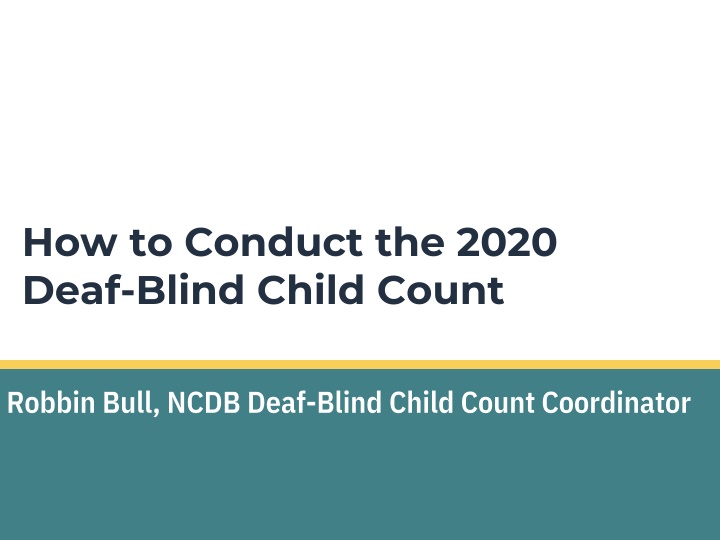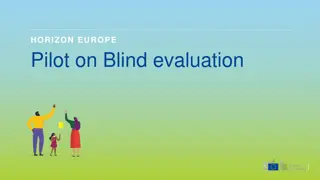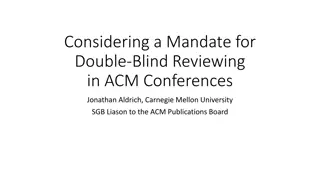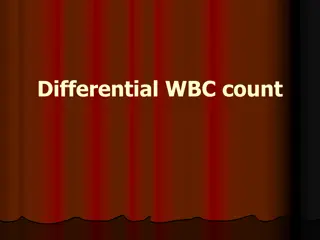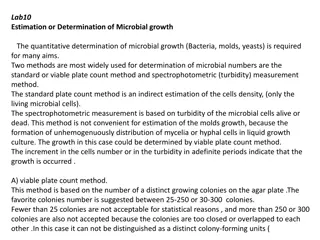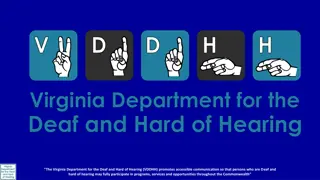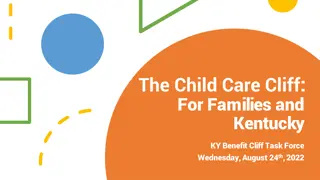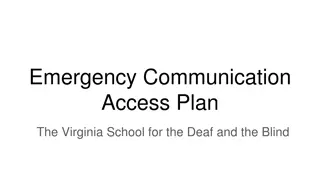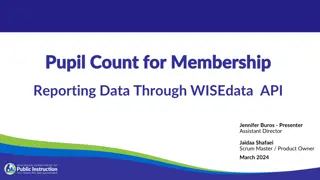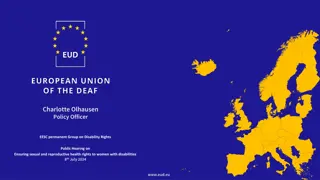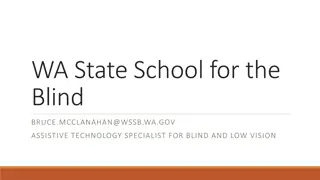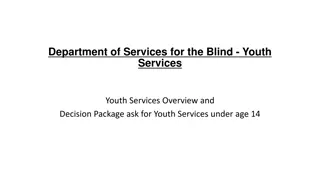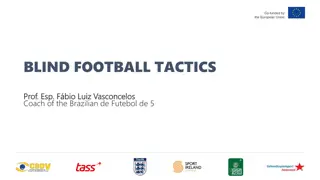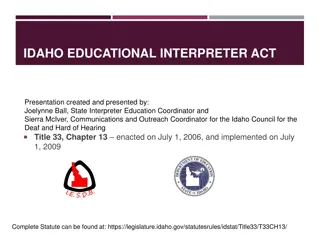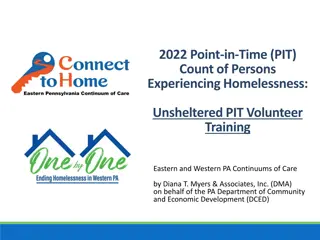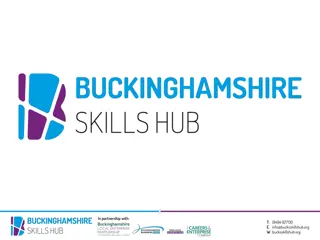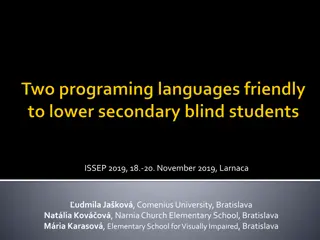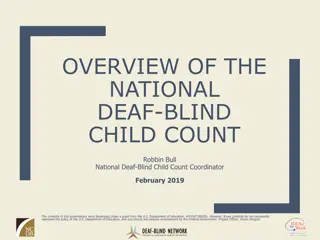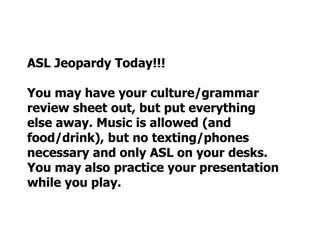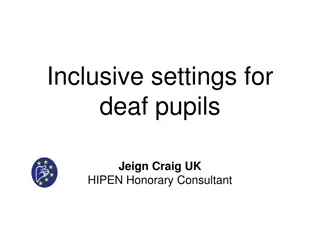Conducting the 2020 Deaf-Blind Child Count
Information on the 2020 Deaf-Blind Child Count including data reporting requirements, timeline for changes, where to find resources, and a guide on reporting methods and materials.
Download Presentation

Please find below an Image/Link to download the presentation.
The content on the website is provided AS IS for your information and personal use only. It may not be sold, licensed, or shared on other websites without obtaining consent from the author.If you encounter any issues during the download, it is possible that the publisher has removed the file from their server.
You are allowed to download the files provided on this website for personal or commercial use, subject to the condition that they are used lawfully. All files are the property of their respective owners.
The content on the website is provided AS IS for your information and personal use only. It may not be sold, licensed, or shared on other websites without obtaining consent from the author.
E N D
Presentation Transcript
How to Conduct the 2020 Deaf-Blind Child Count Robbin Bull, NCDB Deaf-Blind Child Count Coordinator
Agenda Dec. 1, 2020 Data Reporting Requirements Timeline for Changes Where to Find Resources Guide to Resources What s New and Different FAQs Data Quality and Accuracy Network Sharing
2020 Data Reporting Requirements Data Snapshot date: December 1, 2020 Data Snapshot date: December 1, 2020 Due Date: May 10, 2021 Due Date: May 10, 2021 Data File: Data File: Spreadsheet file in .xls, .xlsx or .csv format General Data Notes are Required: General Data Notes are Required: Level of implementation of new updates Details unique to state/helpful to understand data
Timeline for Implementing Changes A phase-in implementation will be allowed. State deaf- blind projects can: Fully implement the designated changes with the December 1, 2020 DBCC Implement some of the changes for the 2020 DBCC Wait and fully implement all changes with the December 1, 2021 DBCC. (All changes must be implemented for the December 1, 2021 DBCC.)
Where to Find Resources Reporting Materials section on Child Count Management page of NCDB website Instructions Includes codebook codebook and quick reference Sample Spreadsheet Submission Link quick reference table Additional Resources 2020 National Deaf-Blind Child Count Revisions Deaf-Blind Child Count Change Log (2007-2020) Guidance on Reporting Ethnicity and Race
Guide to Resources (1 of 2) Instructions, Codebook, and Quick Reference Table Instructions Instructions (pg. 3) basic information for preparing the report Codebook Codebook (pg. 5) detailed information about all fields and codes Quick Reference Table Quick Reference Table (pg. 27) condensed summary of codes for all fields Child Count Sample Spreadsheet Sample spreadsheet layout for reporting data It is not mandatory for data to be reported using this file
Guide to Resources (2 of 2) Child Count Change Log Provides a crosswalk of all code changes Contact Robbin for a checklist to track updates as they are made National Child Count Revisions Documents all revisions Useful to reference for a deeper understanding of specific changes
Whats New and Different (1 of 4) Reorganization Better flow for collection Not required to re-organize, but will be easier for communication with NCDB and for viewing future resources
Whats New and Different (2 of 4) New Items - mandatory Newly Identified - might already have a field in your database for this that is labeled something different Data Notes for any specifics related to a child record IDEA Services - was added to help us more accurately report those receiving IDEA services
Whats New and Different (3 of 4) Optional Items Id Code (ONLY if Child Code used as unique identifier) DOB vs. birth day, month, year Primary language in the home Part B Exiting (for ages 3-13 only)
Whats New and Different (4 of 4) Ethnicity/Race Collecting and Reporting are different Resource: Guidance on Reporting Ethnicity and Race Other Disabilities Definitions added Educational Environments ALL CODES HAVE CHANGED = ALL DATA MUST BE UPDATED May be a script to change Double check your data to be sure it is accurate
FAQs (1 of 4) Q. Do you want the date for the newly identified students only for the current Dec. reporting period (Dec 2 previous year to Dec 1 reporting year) or do you want everyone's date of identification? Does data need to be cleared each year of previous newly identified dates? A. Once data is reported in the newly identified field it should not be cleared. NCDB will extract data each year for only children with dates within the current reporting year.
FAQs (2 of 4) Q. If a child is determined not to be eligible for DB services, how do I report them for Part C or B Exiting? A. The child may still be eligible for IDEA (Part C or B depending on age), therefore may not have exited. If still receiving IDEA, indicate In program in the appropriate age exiting field and only indicate No longer eligible for DB Project Services in DB Project Status.
FAQs (3 of 4) Q. Our state allows children to receive Part C services past age 2. Can I still report them using the categories that pertain to Part C (Birth 2)? A. Yes, however you must include state data notes letting NCDB know that your state allows for Part C services to extend past age 2.
FAQs (4 of 4) Q. I have a student that became ineligible for DB project services after the last child count report. Do I include them on this report even though they are ineligible? A. Yes. It is important to get exiting data. Report any child that was active at the beginning of the reporting period and at the end of the reporting period was no longer eligible. Report the child as No longer eligible to receive services from the deaf-blind project in the Deaf-Blind Project Status field. (Reporting year: December 2 of previous year to December 1 of report year)
Data Quality and Accuracy Review data file before submitting, particularly.. Check children transitioning from Part C to Part B Check children with Part B category of Developmentally Delayed Old data codes still need to be updated in some cases (Check Change Log document for older changes if necessary) Data Feedback File (DFF) will still be provided highlighting data to check Refer to 2020 Drop-In Meeting: Data Accuracy and Using the Data Feedback File for more details
Network Sharing Please Share Updates! Others would benefit from seeing your updated child count collection tools. Please contact me if you are willing to share your updated forms as examples.
Questions? Have a question about the Deaf Have a question about the Deaf- -Blind Child Count? Blind Child Count? robbin.bull@hknc.org, 503-831-4649 OR Drop Drop- -in Office Hours: in Office Hours: My Google Meeting room My Google Meeting room Thursdays 11AM Thursdays 11AM - - 12PM Pacific No appointment necessary! No appointment necessary! 12PM Pacific
OSEP Slide The contents of this presentation were developed under a grant from the U.S. Department of Education, #H326T180026. However, those contents do not necessarily represent the policy of the U.S. Department of Education, and you should not assume endorsement by the Federal Government. Project Officer, Susan Weigert.
